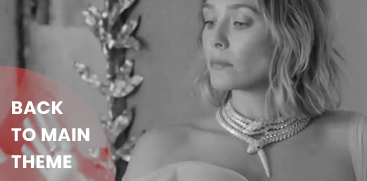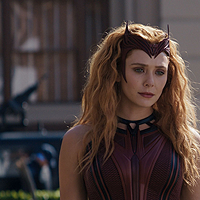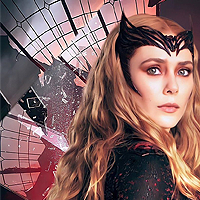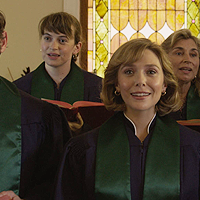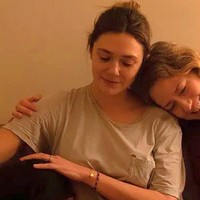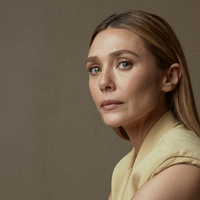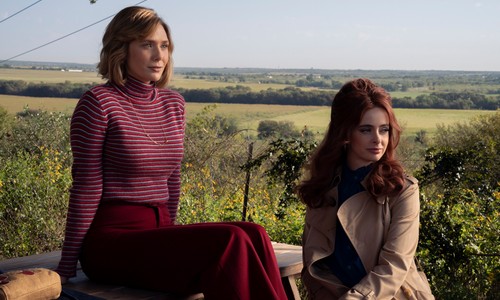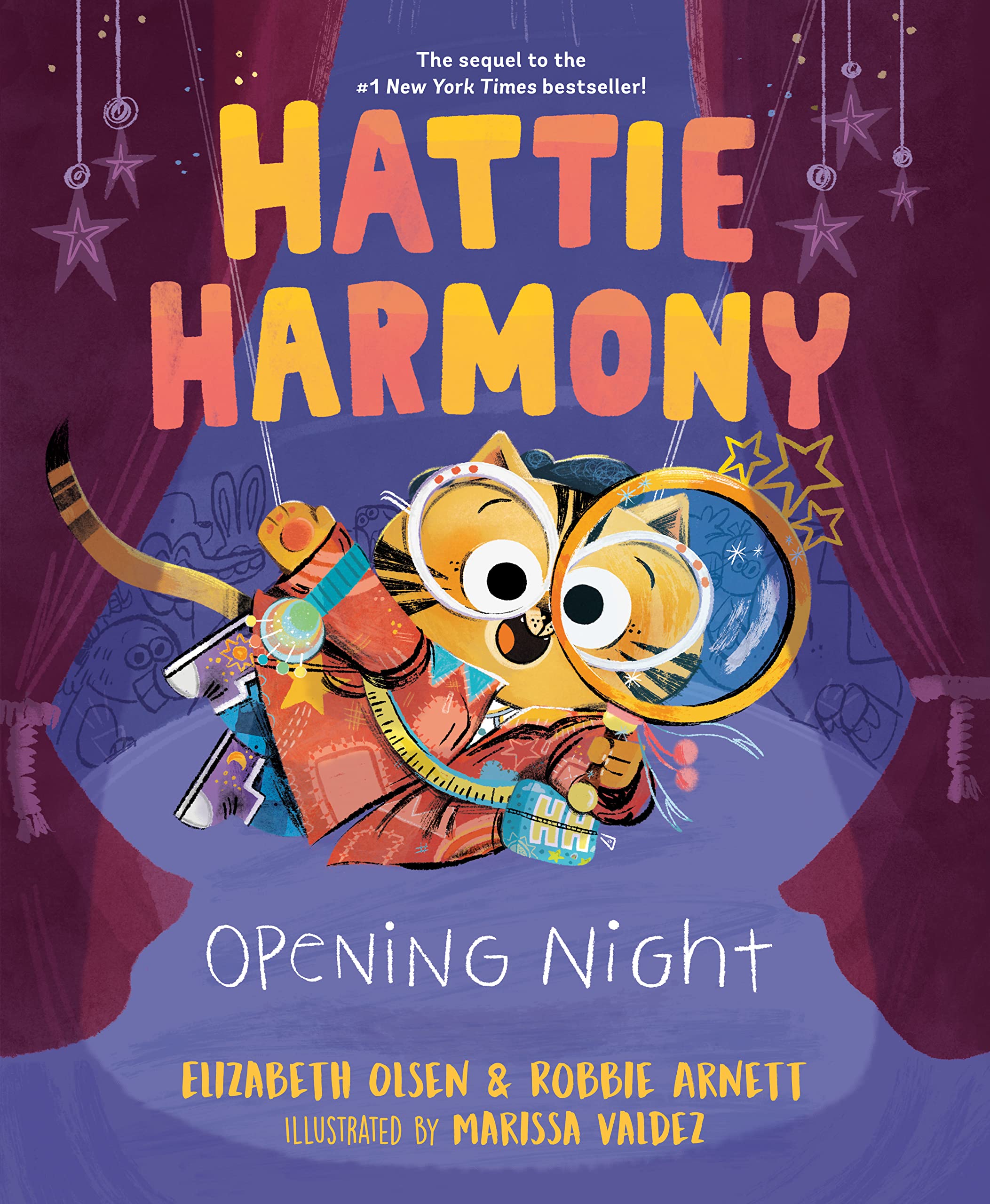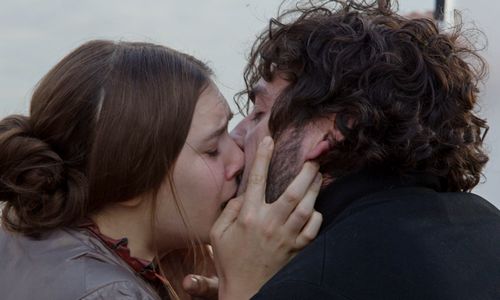The Love & Death star talks taking on the story of Candy Montgomery.

HARPER’S BAZAAREElizabeth Olsen doesn’t like true-crime stories, nor was she looking to star in another show on the heels of the critical success of WandaVision and Sorry for Your Loss. But when the Emmy-winning writer and producer David E. Kelley approached her about playing Candace “Candy” Montgomery, the suburban Texas housewife who was accused (but never convicted) of the brutal axe murder of her neighbor Betty Gore in 1980, Olsen found herself unable to turn down an opportunity to re-examine a case that had been ripped from the headlines.
“The thing that I found interesting about [Love & Death] was this portrait of a woman who didn’t feel like someone who was diagnosable, like [with] multiple personality disorder,” Olsen tells BAZAAR.com on a recent video call from New York City. “It was someone who was put in such absurd circumstances. What are all the steps that led to the decision making that happened and for the decision making to have gone so wrong? What happens in someone’s life that leads to that? So it’s not so much about the sensationalizing of a murder, but it was more a character study that I thought could be interesting.”
Created by Kelley and directed by Lesli Linka Glatter (Twin Peaks, Mad Men, Homeland), the seven-part HBO Max series, which premieres today, stars Olsen as Candy; Lily Rabe as Betty; Patrick Fugit as Candy’s husband, Pat; and Jesse Plemons as Betty’s husband, Allan, whose 10-month affair with Candy preceded his wife’s demise. Following a 1990 made-for-TV movie starring Barbara Hershey and a recent five-part Hulu series starring Jessica Biel (which Olsen has yet to watch), Love & Death is just the latest project to revisit this true story, which Olsen feels is “stranger than fiction.”
Below, Olsen discusses the research and preparation that went into her portrayal of Candy, her attraction to playing characters that make morally questionable decisions, and her future as Wanda Maximoff/Scarlet Witch in the MCU.
You used John Bloom and Jim Atkinson’s book, Evidence of Love, as a guide to fill in any gaps in the story for your portrayal of Candy. How did your research inform your approach to the character, and what was the essence that you wanted to capture about Candy and the women of that era?
What I learned most about Candy from that book was just an insight [into] a state of mind of emotional intelligence and youth. I found the letters that she wrote to Pat when they were courting each other. It was all very pure. [There was] an idealized way to communicate with someone you think you’re supposed to love in order to fulfill the dreams that you have. She also read a lot of airport romance novels. So I think those were really informative of someone’s expectations of themselves and others and what they want to project out to the world.
And just basic things like trying to figure out how she talks, because I don’t have a recording of her voice. [With] someone who’s moved around so much, there’s still ways to have regional qualities of speech, depending on how much time you’ve spent and where. She’s moved around all over, including France. I thought of her as someone who thinks of herself as this well-traveled woman because of being an army brat. There are elements like that where we were like, “Oh, and she would have this kind of top, because it’s a little bit elevated from what most people would normally wear.” Things like that just made her feel like she had a step up in the world—that was really all about the illusion of projecting some sort of idealism.
Given that there were two women involved in this crime and only one lived to tell her side of the story, how did you all come to an agreement of what you wanted to portray as the truth?
My job was to tell what her truth was that she presented and allow for space for there to potentially be another truth. In performance, there are opportunities to maybe create a window into “Maybe there’s another truth besides the one that I’m telling.” But ultimately, it wasn’t a conversation I had with David or with Lesli. The only thing I can compare it to, really, is in Martha Marcy May Marlene, I never really talked to [writer and director] Sean Durkin about what he perceived to be the truth or the reality. All I was thinking about was my reality, and we realized while we were doing press for that movie that he never actually told me what he thinks about the ending, and I never asked because in my mind it doesn’t matter.
I think what’s interesting is sometimes when you have characters, there’s a truth that I decide about the character, and then there’s a truth that the director decides about the world, and sometimes those [truths] not being aligned could create an illusion of tension that could be interesting—or there could just be confusion. But whether or not Lesli thinks she’s just a liar, I don’t know.
What kinds of conversations did you have with Jesse Plemons about how to show the interplay and the progression of the affair?
We talked a lot about it being like a high school romance. That’s kind of emotionally where these people are. Based on this book and how they courted each other, we didn’t think of it as a lusty affair; it wasn’t driven really by their undeniable physical chemistry. It was really about this friendship. They were filling holes in each other’s lives, like a companion, which in [some] ways is more dangerous for an affair than just the physical aspect of it. Because it was pretty up and down, we wanted to figure out how to create a clear arc and a clear split, like who wants it to end and when, and when that shifts. We luckily had a bit of rehearsal time beforehand to try and make sure that we weren’t repeating beats.
What was it like for you to shoot the scene when Betty confronts Candy about her affair with Allan and then Betty’s death scene? Did you find yourself constantly questioning at every turn whether or not Candy had the capacity to strike her 41 times with an axe?
We tried really hard to make everything specific to the lacerations that were discussed in the trial, when it came to shooting that. I have a hard time understanding going over to someone’s house and knowing where they keep their axe or knowing that they even have an axe. I don’t really understand another way for the axe to be presented into the room besides someone who lives there presenting the axe into the space. So that’s something that I believe was logical [in Candy’s retelling].
I think a lot of times when we see these stories that happen in real life, and it seems stranger than fiction, we start to assume that there’s something wrong with people who do things that seem like the wrong way to handle something in an extreme situation. And I don’t know how our brains react in such extreme situations, because I’ve never been put in them, or how our bodies do in survival mode.
I know that when we filmed the first full take of the fight sequence from beginning to end—it was me and a [stunt] double—my whole body was vibrating, and there was a crazy, terrifying adrenaline rush. I try not to live in those moments because they’re completely useless, they’re not on camera. But there is a physical thing that happens where it’s an undeniable experience of sorts and there’s a part of your brain that thinks, This is what maybe one would do in a situation.

There are a number of extreme close-ups of Candy’s face, but the most jarring one, for me, comes at the end of the first episode, which contrasts Candy in the shower on the first day of her affair with Allan and the day she kills Betty. What did you want to convey in those moments to show the physical manifestation of her guilt and inner turmoil?
I think at that moment, she’s not pretending it didn’t happen; she is trying to figure out how the rest of her life doesn’t change at this moment. I think she’s in such terror that everything in her life is gonna be taken away from her, and she, in that car ride home, starts to plan. The only time she sits with that experience is when she’s in the shower [after she kills Betty] and then later in that hypnosis thing, which I have opinions about. I can’t imagine anyone having that experience without choosing to, but whatever…
You’re referring to a scene later in the season in which Candy visits a psychiatrist who could become a part of her defense in court. What gave you pause about shooting that scene?
I think of her as being such a controlling woman that I can’t imagine someone that controlling being able to be under hypnosis. I’m just trying to play the scene, and I’m trying to understand that there’s a version of the truth where she’s in hypnosis and [there] is some sort of catharsis that she gets in that moment, and there’s a version where she’s aware of how this could potentially help her case, so she uses it in a manipulative way. So part of me wonders if she knew what she was [doing].
During a recent interview on The Today Show, you joked that “playing characters that make questionable decisions is something that [you] actually enjoy.” What draws you to playing women with such complex inner layers?
I don’t see the world as a place of “us and them” or “right and wrong.” This is the easiest way to explain it: If I don’t agree with someone on something that’s become politicized or whatever, and I have my opinion and I’m talking to someone who doesn’t share that opinion, instead of me just choosing to judge that person, I actually want to understand why they have that opinion—maybe how they were raised, what they’ve experienced, what their job is, what their parents’ jobs were. So I think of that with characters. I just think, “Oh, that’s not something that I hope I ever do. However, what leads to people having that brain organization or that value judgment?” And I just find the world to be endlessly interesting because of our differences, not because of our similarities.
Speaking of those kinds of characters, how did you feel about Wanda’s dark turn in Doctor Strange in the Multiverse of Madness? And considering the way that she sacrifices herself, what are some things that you’re looking to explore further with that character?
I’m really proud of the fact that we’ve done so much already. If the whole thing were to collapse today, I would feel proud of what we’ve built, and I think we entertained the fans… [Laughs.] I think it was surprising, and it wasn’t part of a formula that you could chalk it all up to, so I’m proud of what we made.
Have you ever worried about typecasting, considering that so many people associate you with a superhero?
I don’t think specifically about this idea of “typecast” just because I think I’m at a certain age—or not age, but like at a certain amount of time [in the business]—where I just feel like that’s not happening, luckily. I like surprising myself. Sometimes, I feel like if I have experienced a certain type of character, I just become bored with it, and I want to try to explore something different inside myself. So I just start bouncing around to different places because of my own curiosities of potentially exploring something internally.
What kind of material do you find yourself drawn to now compared to earlier in your career?
When I was younger, I was just happy to get work. There wasn’t a philosophy yet of what and why; it was just so exciting to have opportunities at all. I think if I had more years of working and grinding before Martha, I maybe would have had to develop a philosophy in that way. But I learned it as I was going, and I feel like I’m in a place now where I understand when I have similar taste as a filmmaker or not. I think I have a better understanding of the history of storytelling that I want to align myself with. So projects that I look at now are really filmmaker-driven and people who I think have a strong point of view.






